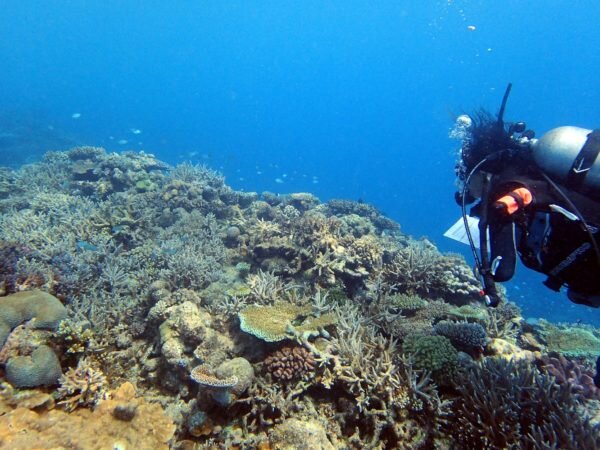Why Weedy Species Matter on Coral Reefs
By Sangeeta Mangubhai
Healthy thickets of Acropora corals on reefs at Kanacea Island. Photo ©Sangeeta Mangubhai/WCS.
Periodic disturbances to coral reefs increase coral diversity by creating new space for new species to colonize. Shortly after a disturbance it is usually the “weedy” species like branching Pocillopora and Acropora species that come back first. Weedy species on reefs simply refers to fast growing corals that are quick to colonize a reef after a disturbance.
Pocillopora corals. Photo by Sangeeta Mangubhai/WCS.
Sometimes if broken fragments of these species get lodged into crevices in the reef they will continue growing and form a colony again. Weedy species therefore are critical for the rapid recovery of coral reefs after disturbances.
But what if there are not weedy species around? How does that affect the recovery of reefs? These are the questions that increasingly worrying me, and here is why. When you have high seawater temperatures often the first corals to bleach (“go white” as corals lose their symbiotic algae called zooxanthellae) and die are species of Acropora and Pocillopora.
Sangeeta Mangubhai documenting the different genera of coral found in the northern Lau group. Photo © Steven Lee.
As we have repeated coral bleaching events, both Acropora and Pocillopora that used to dominate reefs are disappearing and becoming increasingly rare.
In addition to being early colonisers after disturbances, many weedy species create three dimensional structure and complex habitat for many reef fish species. For example, large groupers like to rest and hide under Acropora table corals, and flame hawkfish and porcelain crabs are often hidden at the base of branches of Pocillopora corals. Many butterflyfish feed on the polyps of Acropora corals.
Thickets of Acropora are used as shelter or home by small chromis. Photo © Sangeeta Mangubhai/WCS.
While were encouraged to see many sites with healthy stands of “weedy” species around Kaibu, Yacata, and Vatuvara islands, there were very low numbers at sites that had cyclone damage. Sites that had large numbers or high cover of Acropora and Pocillopora species had notably more fish – including larger schools of parrotfish and snappers.
Those that were damaged by the cyclone had little coral diversity, with the reef appearing flat and featureless and providing little shelter and hiding places for fish and invertebrates.
So weedy species matter!




